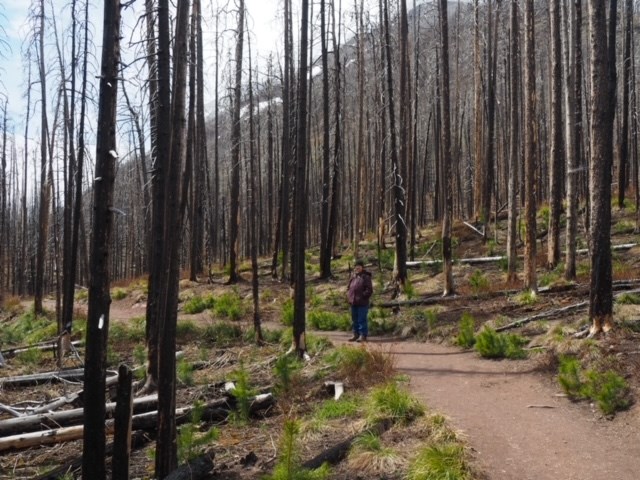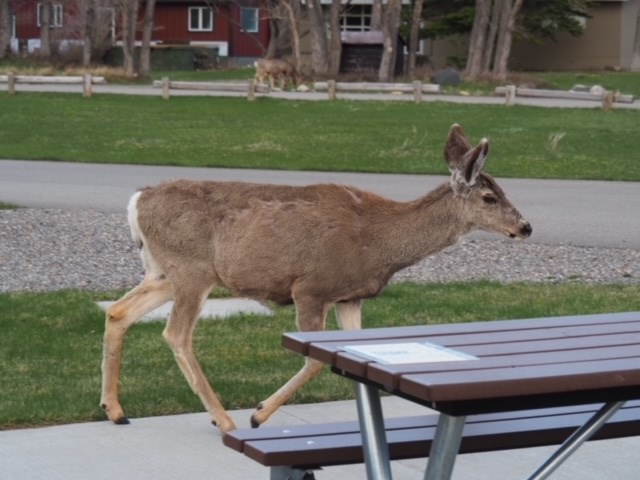One of the national parks that was on our list to visit on our return trip from B.C. to Ontario was Waterton Lakes National Park, in southern Alberta.
Efforts to begin the process of declaring this area a park first started in 1895. Continued development of the park over the next century helped to create what it is today. Noticeable as you approach the park on Alberta Highway 6 is the change from prairie-like grasslands with mountain ranges as magnificent backdrop. Waterton Lakes National Park straddles the Alberta-Montana border and is twinned with Glacier National Park in the U.S. Together they are named the Waterton-Glacier International Peace Park.
Parks Canada has a wonderful interpretive centre located in the Waterton Park town centre and their town campsite is close to the lake. Wonderful views of the mountain scenery surround the area and with the changes in weather over the days we stayed there, the views of these mountains always seemed to offer something new. The combination of mountains and lake scenery, was also quite spectacular.
It was quite windy and cold the days we were there and we were glad for the insulation in the trailer, a propane furnace and our cozy sleeping blankets. We also were pleased to have brought a small electric heater so we could conserve propane when electricity was available. We felt quite sorry for the younger folk in tents by the lake that were flapping furiously, especially the one morning when there was driving snow. We later discovered that Waterton Lakes area is the second windiest area in Canada.
One of the highlights of our stay there was sighting the bighorn sheep and deer that commonly walk through the town and campsite area. Several seemed to check out our trailer but were only attracted to the grass growing around it.

The opportunity for some hiking was also a highlight. There are numerous hikes all categorized by level of difficulty. The first was quite short, taking us through the campground, along the bank of the Waterton River to view Cameron Falls. A walkway and stairs allowed one to continue up to the top on both sides to view the falls from there. We chose one side. While there, deer also came down and crossed behind where I was standing taking photos of the falls.
We had to drive the Red Rock Parkway to do one of the longer hikes. It was here that we could observe the effects of a major wildfire called the Kenow Wildfire that tore through the area in the early fall of 2017. The fire, which started in B.C., unfortunately affected 38 per cent of the park, and much more of the surrounding areas. You really can’t appreciate the extent of such a wildfire until you stand among the blackened skeletons of an entire forest. Some evidence of regrowth could be seen in the five years since this occurred, but it will be generations before it recovers to its natural state. At the end of this hike was another amazing waterfall sight, Blakiston Falls, with viewing platforms recently replaced after the fire.
Another interesting feature of the Waterton Lakes Park is the Prince of Wales Hotel. Built in 1927, the hotel was designated a National Historic Site in 1992. At its location, on a hill overlooking Upper Waterton Lake to the front and mountain peaks to the rear, it is definitely a site to see in the area. A path along the outside of the hotel has markers indicating the names of the mountains in the distance.
